The importance of selecting the right digital customer care channels
There has been a true acceleration in terms of technology evolution in the past few years. Our vectors of communication have changed: new devices, new technologies, new methods and new results. All these changes directly impact the way your customers expect to interact with your company. You wonder how to remain up-to-date and pick the right digital channels?
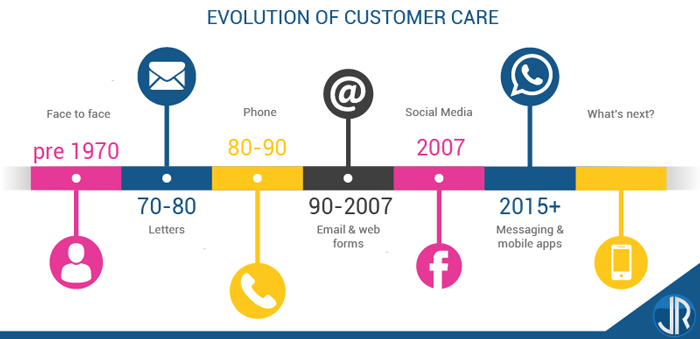
The evolution of digital customer care
There has been a real evolution in the way consumers interact with brands. The amount of letters sent has consistently decreased since companies can be reached through phone.
The arrival of emails and web-forms have also changed the landscape greatly, making it easier to organize your thoughts and prepare all details without having to interact directly with someone during office hours. Since 2010, the usage of phone to contact customer services has dropped by 10 points.
When Facebook started to take off in 2007, no-one expected it would be more than a P2P platform. Quickly, companies took the marketing opportunity to position themselves on the platform and experienced an uncontrollable explosion of love or hatred coming directly from consumers. The platform had to evolve to offer tools for proper company / customer communication until becoming a real channel for customer care, soon followed by Twitter and other Social Media channels.
The evolution of eCommerce and online buying brought another opportunity for companies to mirror shop interactions and push sales with the invention of the live-chat (or web-chat).
A few years later, the development of smartphone and mobile apps lead to a new revolution, with new methods of interactions, through variations of what we call “messaging”.
But the evolution isn’t over yet: Google, Apple, Facebook and Amazon (GAFA) still have projects that may revolutionize the way we communicate.
All these changes are difficult to catch up with. Yet, a study from Gartner shows that 64% of people place the quality of customer service before the price when selecting a brand: quite a good reason to spend some time choosing the right channels for your Customer Care!
 Shep Hyken, Customer Service & Experience Expert, Founder of Shepard Presentations, recommends:
Shep Hyken, Customer Service & Experience Expert, Founder of Shepard Presentations, recommends:
" Right now, the hottest thing is AI – I can’t go anywhere without hearing about AI. Bots do a good job for basic things but more and more, people wonder about how to “humanize digital support” – we are not quite there yet. In any case, remember: the transition between chatbot and human has to be seamless. "
The difference between synchronous and asynchronous channels
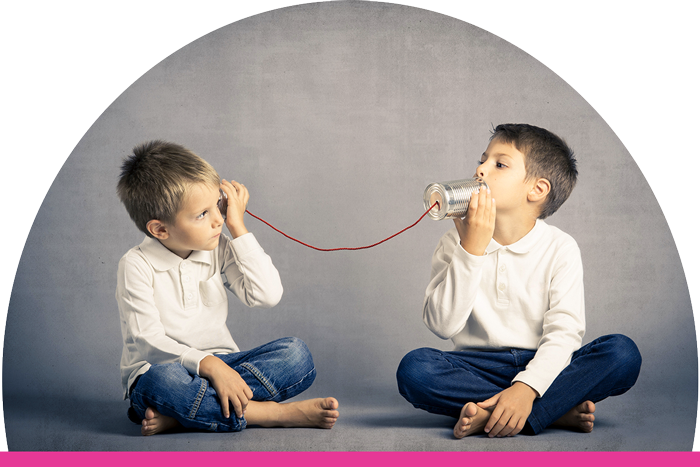
Before talking about how to select the right digital channels for Customer Care, there is an essential distinction to make between them: synchronous and asynchronous.
A synchronous channel is a channel that requires both parties (the customer and the company) to be conversing in the same time and to focus on the conversation. For example, a phone conversation is synchronous: it requires both parties to be on the phone in the same time and to dedicate 100% of their attention to the interaction.
Using this type of channel has a serious impact on your strategy: it implies that the channel is only usable while there is someone available in your team (traditionally during office hours only) making it much less convenient for the user. It also implies that your Customer Care agents cannot multitask. Worse, it means that it is almost impossible for you to balance the workload throughout the day: you suffer from low tides and peak times that you must control and regulate.
But there are also real pros for using synchronous channels: you benefit from a direct conversation with your user, there is no filter between you, there is a lower risk of missing information since you can gather it live and you can use this opportunity for upselling.
An asynchronous channel is a channel where a delay between the question and the answer is admitted. For example, the email is a typical asynchronous Customer Care channel: there is no instant response expected.
The problem with asynchronous channels is that the conversation may take much longer if the problem isn’t clear or if information is missing since it will require many back & forth and each of them comes with a delay.
The great thing, however, is that asynchronous channels represent a much lower burden on your team and offer more flexibility to your clients. Instead of staring at their screen, waiting for your answer, they can send a message then go back to their usual activity, knowing that the answer would arrive at a later stage. It also allows people to contact you at any given time, without the need to respect opening hours, making your company virtually accessible 24/7. For your team, it is even better: asynchronous channels allow you to balance the workload throughout the day, analyze and route messages based on importance and urgency and manage several tasks at once.
Now that the difference between synchronous and asynchronous channels is clear and that you are aware of the pros and cons attached to each of them, let’s look a little deeper into each channel to select the ones that make sense for your business.
 Shep Hyken, Customer Service & Experience Expert, Founder of Shepard Presentations, recommends:
Shep Hyken, Customer Service & Experience Expert, Founder of Shepard Presentations, recommends:
" We have to be very careful with asynchronous channels to not miss people’s expectations. People expect FAST answers. The solution is to let customers know when they can expect a reply, with an automatic answer stating the speed of response for example. And remember: always exceed the expectations you’ve set. "
Selecting the right digital channels
As we explained, there are now multiple channels available to communicate with your customers. Choosing the right channels can be very tricky, because each channel comes with an additional burden for your team in terms of setup, cost, adaptation and workload. Consequently, choosing the right channels from the start is key to Customer Care success.
Let’s review together the channels that are available today and the reasons why you should or shouldn’t use them.
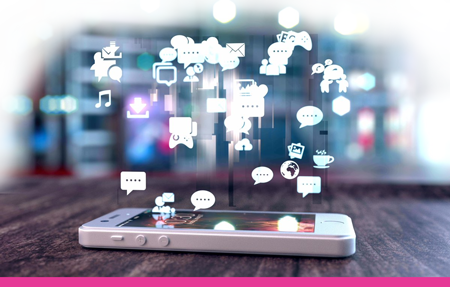
Email & contact form
Email is the mother of all digital interactions. Not integrating email in your Customer Care strategy would be a huge mistake as it would prevent your clients from contacting you on a channel where they have the amplitude to express themselves in detail. (There is an exception to that rule in countries where the mobile has evolved so fast that it completely skipped the email era, in Africa for example).
Using contact forms gives you an additional layer of comfort since you force people to follow your process and provide the information you will need to answer faster and better.
The pros:
Asynchronous channel with low expectation in terms of response speed (48h is a standard across industries), good opportunity to positively surprise your clients with a faster reply, gives you time to carefully consider your answer and reply at your own pace, can be partially automated with reply assistants covering most standard situations.
The cons:
Messages are usually long and complicated to treat compared to other channels
When to use:
If you have a website, people will expect to be able to contact you via this method and you should therefore have it. Try encouraging people to use email especially for complicated issues that require much information and time to be treated efficiently.
Social media
Social Media are no longer something you can ignore. The question isn’t really “should I be available on Social Media?”, but “Which Social Media channels should I be available on for Customer Care?”.
Each Social Media has its own DNA: Facebook is more of a personal platform preferred for C2B interactions, Twitter is more efficient for short questions (even though the limit recently increased from 140 to 280 characters, studies show that 95% of messages exchanged still use less than 140 characters), instagram works better in fashion, food & tourism industries, etc.
Since you can’t ignore Social Media, you must select the right ones for your company.
The pros:
You can interact with your clients directly in their own world, on their own terms, you treat messages that would come anyway but be ignored if you did not provide a platform, you can listen to what people say and offer public answers to common questions. Moreover, Social Media are asynchronous fast: you are not supposed to answer instantly, yet, a quick response is expected.
The cons:
Volumes of interaction can vary greatly on Social Media and when a major problem occurs it usually is the first vector to convey messages in mass, people can contact you publicly and your team must be properly trained to manage such interaction.
When to use:
Always. You can’t ignore Social Media, but you must select the channel(s) where your clients expect you to be. If you have an existing Social Media page, it is de facto considered an available Customer Care channels, but you could open new ones if you know your clients to be active on another platform.
Web chat / Live-chat
These two terms refer to the same thing: a small window within your website enabling a synchronous chat between a visitor and the company.
Live-chats are great for Customer Care since you can solve your visitors’ problems live, as it happens, but there are also great channels for sales and upselling (the same way an actual sales person would come to you in a physical shop and help you buy more).
It is also an information-rich channel where clients’ information is easily accessible since the plugin is directly integrated in your website so you could access behavioral data as well as basket information.
Last but not least, web chats usually offer trigger customization, allowing you to decide when and why a chat conversation would popup in specific situations but not others.
Unfortunately, most live-chats on the market are hardly mobile friendly and the great experience you may enjoy on a desktop may not be as positive on a mobile.
The pros:
Web chats allow you to discuss directly with your clients, without filter, to solve their problems live, without delay, and give you an opportunity for upselling or simply push to conversion.
The cons:
Live-chats are synchronous channels that add an extra burden on your Customer Care team’s shoulders since it involves managing peaks and lows. This channel also involves being available only at certain times making it less convenient for consumers who need to adapt to your own schedule.
When to use:
If you have an eCommerce platform, you must have a live-chat. This channel will replace the traditional shop sales and help you convert more visitors you may otherwise have lost. It is also a great way to monitor your activity and identify problems people often face at different stages of the buyer journey so you could always finetune your process and strategy. However, if you do not sell directly online, a web chat may bring more problems than solutions.
Messaging
Messaging channels are the new trend. You may not know what “messaging” refers to, yet you certainly use them daily, since 1.58 billion users were using them back in 2016.
Apps like Facebook Messenger, Whatsapp, Viber, WeChat, LINE, Kaokaotalk and even SMS are messaging channels. Messaging channels won their popularity from the fact that there are asynchronous: you can send a message to someone and go back to your life, knowing you will receive an answer later during the day. According to BT & cisco, 66% of the population uses messaging apps several times a day.
The pros:
Messaging apps offer the flexibility and convenience of asynchronous Customer Care channels both to you and your clients. You can be contacted anytime, even during off hours, and organize messages to treat the most urgent ones first. It is also a perfect way to make yourself available where your clients need you most: on channels they use daily for personal reasons. What better place to be available than on channels they’ve already adopted, instead of forcing them on channels you control?
The cons:
Messaging apps are third parties over which you have no control: you do not necessarily own nor control the data and you may not have guarantees over the future of a channel.
When to use:
Always. Even if your current target isn’t big on messaging apps, the evolution of the population clearly shows that these channels will be more and more widely used in the near future. The only question is: which messaging app? Since you can’t realistically connect to all of them, you need to select those that your customers appreciate most.
In-app messaging
In-app messaging is the same thing as messaging, except that YOU control it since you include your own messaging solution inside your company app. Your existing clients or users can start a conversation with you directly from your app, without having to open or install anything else.
The pros:
Same as messaging apps, except that you control the data and give additional convenience to your app’s users. Gives additional stickiness to your app.
The cons:
Limited to your app user only.
When to use:
Anytime you have a company app.
Messenger Customer Chat
Facebook Messenger recently launched Messenger Customer Chat, a new hybrid type of Customer Care channel, in between the messaging and the web chat.
Messenger Customer Chat is in fact a plugin you can add to your website to use Messenger as a live chat for visitors to engage in a conversation without leaving your website. The solution seems great since it brings you the best of both worlds: the convenience of an asynchronous channel with the conversion abilities of a live chat.
The reality is however a little different: while Messenger Customer Chat is definitely an asynchronous solution, it could be deceptive as visitors tend to have different expectations (instant response). Moreover, the solution may not yet offer all the same features (website data access, triggers, etc.) that traditional live chats editors provide.
The pros:
The best of both worlds and the ability to extend an existing channel (if you already manage Messenger) to a new platform.
The cons:
Requires users to have a Messenger / Facebook account, doesn’t offer the same possibilities traditional web chats offer and may be deceptive for customers looking for live interactions.
When to use:
If you already handle Messenger or if your website doesn’t necessarily require instant responses, you should definitely look into this solution. For eCommerce companies in need for a robust live chat, Messenger Customer Chat as it exists today may be too limited and should wait to see future developments.
 Shep Hyken, Customer Service & Experience Expert, Founder of Shepard Presentations, recommends:
Shep Hyken, Customer Service & Experience Expert, Founder of Shepard Presentations, recommends:
" There are always going to be new technologies out there. Don’t chase shinny objects. To select the right channels, just ask yourself the question: where are my customers? "
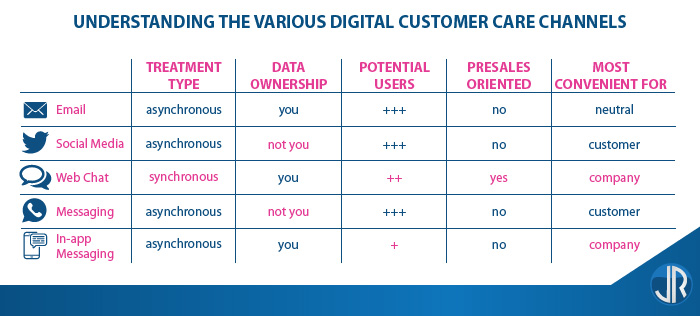
Managing multiple Customer Care channels
As we have seen, each channel comes with its own pros & cons and specificities.
If selecting the right channels was the first step, the second one is about managing them – whether you handle all channels on your own or have a team of 3 000 agents doing it for you, the complexity isn’t the same.
You first need to analyze your ability to manage a surge of traffic: adding new channels of Customer Care generally increases the number of messages you receive because people who may not have taken the time to switch channel previously would now be able to contact you easily. Take it as an opportunity to engage with more people interested in what you have to offer.
That being said, you shouldn’t take on more work than you can handle. Find out how many more messages your team could manage and whether you could afford growing your team – give yourself a little buffer for peak times or your customer satisfaction could suffer from a poorly managed surge of traffic.
 Shep Hyken, Customer Service & Experience Expert, Founder of Shepard Presentations, recommends:
Shep Hyken, Customer Service & Experience Expert, Founder of Shepard Presentations, recommends:
" We have to be where our customers are, there is no way around it. To be efficient on multiple channels, we must cross train employees and empower them with the ability to communicate through multiple channels. Then, equip them with the right tools: there are plenty of software programs out there to help you manage multiple channels at once. "
You may also consider investing in a Digital Customer Interactions Platform (5 international experts explain the difference between a CRM and a Digital Customer Interactions platform) to help you consolidate all your Customer Care sources in order to simplify and speed up the treatment of your messages across channels. This becomes especially useful if you manage multiple channels with multiple agents.
Last but not least, regularly analyze your data: number of messages, customer satisfaction, treatment time, response speed, etc. These indicators will guide you in your future decisions and tell you whether you should open new channels or spend more resources on a specific one.
Remember, your Customer Care department doesn’t have to be a center of costs, you could turn it into a center of profit, if you were able to satisfy clients in a way that would make them purchase more!





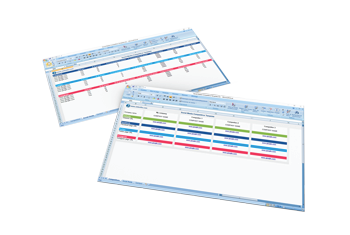





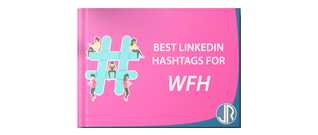


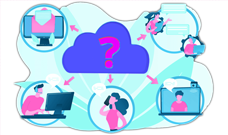


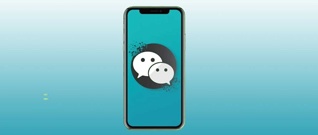

 Français
Français English
English